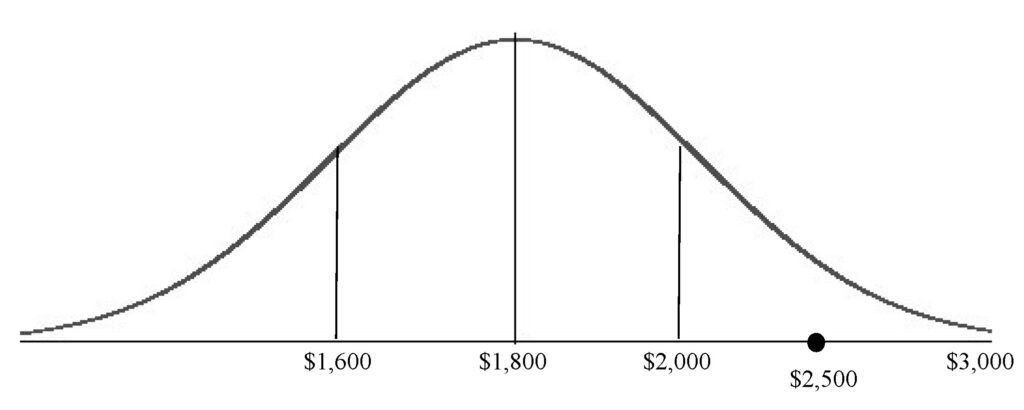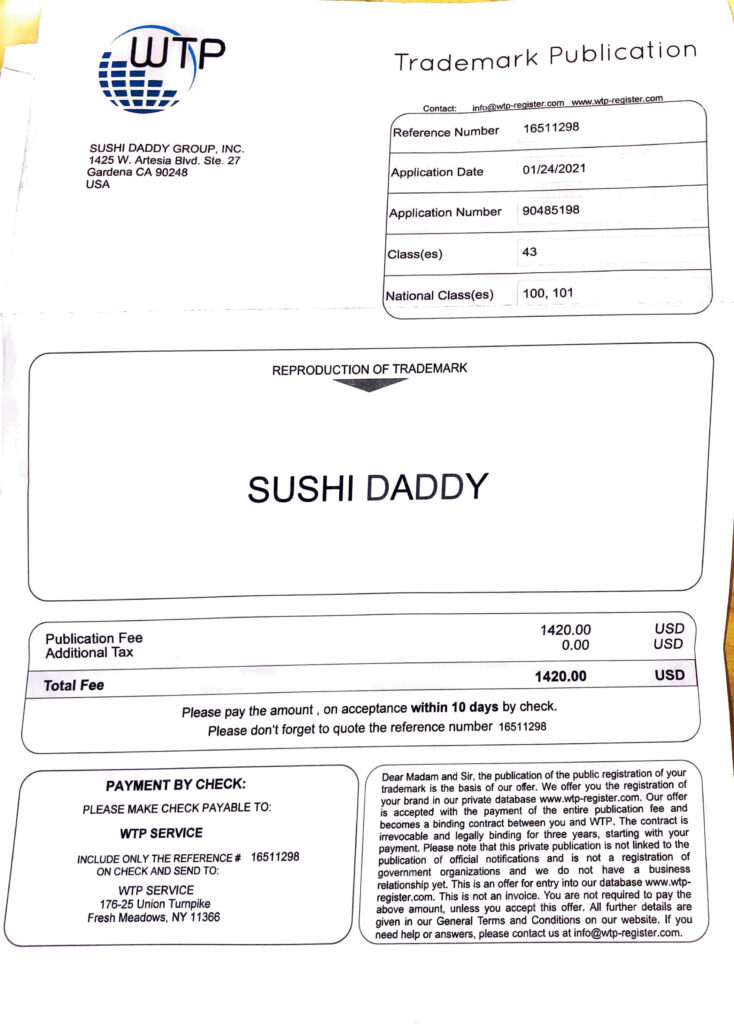In the field of patent and trademark law, the industry standard seems to be flat-fee billing. You will often find law firms that offer a “menu” such as: “US utility patent application $7,500 … Patent search $1,200 … etc.” These flat fees feel comforting to consumers, who do not want to take a chance with unknown costs. I understand that psychology. However, my standard is to bill hourly. Now I’d like to tell you why.
Patent and trademark cases are not factory work. Every case has its own unique characteristics. One case might turn out to have a quick and easy prior art search but complicated claims. Another case might face a lengthy prior art analysis due to a crowded field, but it might have simple drawings. Usually, I can’t predict half of these idiosyncracies before we get to work on the case. It’s just frankly difficult to predict how long a case will take.
From a customer’s perspective, I know what you’re thinking … “I don’t care how long the lawyer takes. I’m paying for the value of the end result.” But do you suppose that’s how a lawyer thinks? No, of course not. On our side of the transaction, time is our valuable commodity. Every hour we spend on one task is an hour that we can’t bill for another. At a lawyer’s rates, that’s a high opportunity cost.
Think for a moment from the lawyer’s perspective. If an attorney bills $400 / hr and sets a flat fee at $2,000, that divides out to five hours. Do you suppose that the lawyer sets this price because he expects to work exactly five hours on every such case? Or do you suppose he foresees five hours as a reasonable maximum? Of course, it’s the latter. We lawyers set our flat fees on the high side to make sure that our time is duly compensated for most or all cases. Perhaps three hours would be an average for this kind of project. In that case, you’re actually paying $667 / hr!
The advantage of hourly billing is summed up in one word: EFFICIENCY. You don’t pay more than you have to, and I don’t work more than I have to. If your prior art search only takes me three hours, I’ll only charge three hours for it. If it takes six hours to do a good job, I will spend the time to do it right (after you’ve authorized it, of course).
A consumer’s main concern would be “padded” billing. That is, if you pay a lawyer hourly, he has an incentive to bill longer — perhaps by working deliberately slowly or providing services that are not really necessary. This is a legitimate concern. It is addressed in two ways. First, there’s competition and market forces. If I estimate that a case will take me ten hours, but Bob down the street estimates that he can do it in seven hours, then you’ll take your business to Bob. Second, when I give you an estimate, it’s a reasonable range. I might say something like, “This could take me 4 to 8 hours. If I’m not done by 8 hours, I’ll stop to explain what’s going on.” If I reach that 8-hour point, I won’t work further without your authorization. I don’t reach my maximum estimate very often. That’s not good for customer satisfaction. I’d much rather make accurate estimates and beat them.
Because hourly billing is efficient, and also because I have relatively low overhead, I can afford to offer you a competitive rate. I bill only $200 / hr. in a field where many law firms charge 2 – 3 times that much. At such a firm, you are paying a premium for their support staff and downtown skyscraper rents. I can guarantee that you’re also paying more than necessary for the luxury of a flat rate.
After our free initial consultation, I will generally recommend that we break your matter into discrete billable units, or maybe begin with a “starter case”. A starter case is usually around my billing minimum of two hours. This is the phase where I get up to speed on your case so I can strategize and come up with an informed estimate. I might then get back to you with an estimate that looks something like this:

This means, “On an hourly basis, your case will probably cost you in the range of $1,600 – 2,000. I won’t bill beyond $3,000. Or, if you prefer to pay a flat fee, I’d ask $2,500 for a good thorough job.” Note that, again, a flat fee comes at a bit of a premium. You can usually expect to pay less on an hourly basis. The flat fee is your insurance against the outlier case that gets unexpectedly out of hand. That’s why I have to set it high for myself.
What if budget is a real constraint? At this point, some of my clients will say, “My favorite number in that estimate is $1,600. I can only afford to pay you that much. If you can keep it to $1,600, that would be great.” I will accept that case, but of course I will budget my work accordingly. Since you are only able to pay me for eight hours, it’s fair that I limit my time to eight hours. For instance, one of the easiest ways to minimize a patent application is to omit the prior-art patent search. But then we reduce our ability to anticipate the examiner’s objections and to optimize your claims. In law, like anything else, you get what you pay for!
I value my business relationships. It’s important to me that neither my client nor I take advantage of each other. In my decade of experience, I have come to find that a competitive hourly rate and reasonable interval estimates, combined with the guarantee that I only bill the hours you authorize, has proven to be the most constructive billing model.
